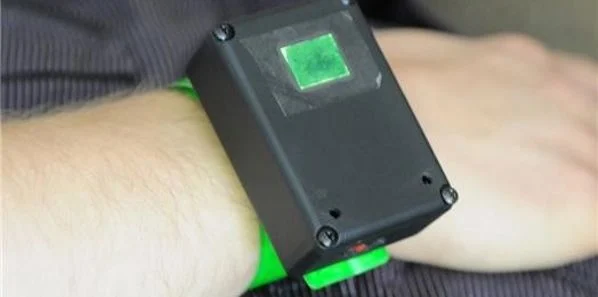The coloured paper tags used to classify victims of mass casualty incidents may one day be replaced by plastic electronic wristbands capable of transmitting real-time data to emergency response control centres. The new tags are being developed by an international team of researchers at Fraunhofer-Institute fuer Angewandte Informationstechnik (FIT), as part of the European BRIDGE project.
During a mass casualty emergency, injured victims must be triaged as quickly as possible so that they can be evacuated and taken to hospitals. Coloured paper tags serve to visually classify victims according to their status, but the new technology developed by Fraunhofer FIT would allow vital statistics such as heart rate, respiratory rate and oxygen saturation to be transmitted to an emergency control centre, permitting control centre staff to have a more accurate picture of the ground situation.
Like their paper predecessors, the electronic wristbands would be colour-coded, with different colours expressing the inherent technology, such as GPS or RFID chips connected to a wireless communication network. Relatively less injured people might receive wristbands with basic technologies, while the wristbands placed on critically injured victims could include additional sensors to capture and transmit vital statistics.
Importantly, all wristbands would be nodes within a wireless network that could operate even if regular mobile phone networks are not functioning. Such a low-bandwith network would combine low energy consumption and long range. The data would be backed up and could be retransmitted by first responders who are equipped in advance with Triage Relays.
“The real-time data from the triage wristbands can be displayed on the large screens in the emergency response control centre, but also on the tablets or smartphones of medical staff in the field,” explained Dr. René Reiners, project manager at Fraunhofer FIT. “First responders and response coordinators thus have a precise picture of the situation on the ground. Rescuers see at a glance where the majority of severely injured casualties are located and can direct the rescue activities accordingly.”
For those who like to be prepared for disaster, FIT will also be demonstrating two smartphone apps for communication between victims and first responders, which would not depend on mobile phone networks. By activating the app on a user's smartphone, a wireless access point is set up and an emergency message is sent. First responders’ phones scanning the area for WLAN networks would be able to detect the emergency message and send a reply signal to the victim’s app.
Source: Fraunhofer-Institute fuer Angewandte Informationstechnik (FIT)
Image Credit: Fraunhofer FIT






